Confessions Of A Whiskey Noob: A Year Of Learning To Drink The Good Stuff
By Melissa McEwen in Food on Mar 2, 2015 8:00PM

Tasting of Jim Beam bourbons at The Bourbon Classic hosted by Author Steve Coomes (Country Ham: A Southern Tradition of Hogs, Salt & Smoke), Jay Denham of The Curehouse and Megan Breier, Kentucky Bourbon Ambassador at Beam Suntory
On a panel at The Bourbon Classic in Louisville, Kentucky just a few weeks ago, Wild Turkey Master Distiller Jimmy Russell thanked women for pushing the growth of whiskey. The audience, at least half women, clapped enthusiastically. By the way, in case you didn’t know, bourbon is a type of whiskey made in the U.S. from at least 51 percent corn, among other legal requirements. Just last year I thought bourbon was a street in New Orleans. Now I’m part of that growth Russell is lauding.
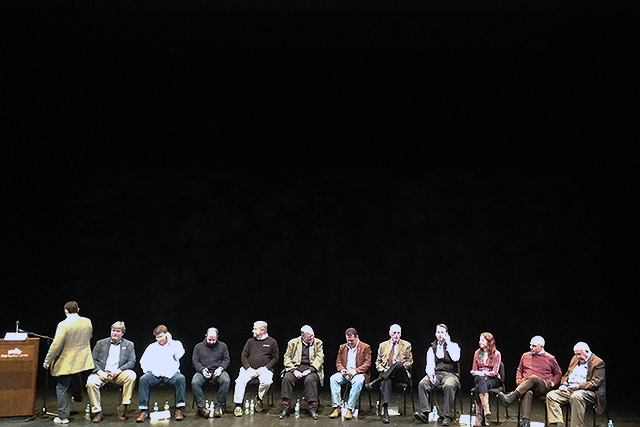
The panel was a veritable who's who of some of the most influential in the world of bourbon, as well as a few new faces. Left to right - Host Fred Minnick (spirits writer), Mark Coffman (Alltech), Wes Henderson (Angel's Envy), Chip Tate (Balcones Distilling), Ken Pierce (Barton 1792), Fred Noe (Jim Beam), Harlen Wheatley (Buffalo Trace), Jim Rutledge (Four Roses), Denny Potter (Heaven Hill), Nicole Austin (King’s County Distillery), Joe Magliocco (Michter’s), Jimmy Russell (Wild Turkey)
Last year when I got an invite to Whisky Fest Chicago, I tried to give it to another writer. I hate marketing that panders to women, because ultimately as Nicole Austin, the master blender of Kings County Distillery, said when she spoke on the panel “we all have the same noses.” But it’s a simple biological fact that I am smaller than most men in both my height and weight, factors that affect alcohol metabolism. And so for most of my drinking life, I thought whiskey was too “heavy” for me, that I wouldn’t be able to handle it.
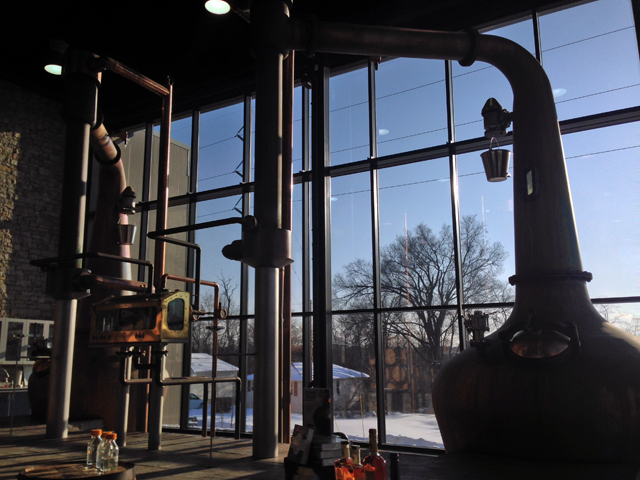
Alltech Lexington Brewing and Distilling
To my delight I found I could more than handle it—because straight up I could very much taste the alcohol and easily gauge my consumption. But first it had to find its way into my glass. When I got my first bottle I didn’t know what to do with it. I didn’t know how to serve it, how to taste it or what to look for while I was tasting.

Stitzel-Weller Distillery
I also learned many of the basics of serving and tasting whiskey at a Dabble class with a delicious meal taught by Jeffrey Carl Mull and sommelier TC Safavi. Like the whole deal with adding drops of water to your whiskey, which I originally didn’t get at all, and now I know can really help bring out certain flavors without masking it the way ice does. They are traveling the world now, but many local distilleries like Koval teach classes as well.
Tastings, classes and restaurants also helps with the price hurdle. It was hard for me to commit to buying an entire bottle when I didn’t even know what I liked yet. Now that I’ve tasted a wide variety of whiskey, I have a much better idea of how to buy it for myself or order it a bar. We are also lucky in Chicago to have plenty of whiskey-oriented bars like Longman & Eagle or Delilah's where you can get a recommendation from a knowledgeable bartender.
Many new whiskey drinkers seem to have a background in craft beer, which prepares you well to crave complex flavors, but not for buying whiskey. I had automatically assumed that a recognizable name probably wasn’t as good as something local and “craft.” But as Austin said “when craft beer started out the big players were not doing anything interesting, but in whiskey the big players have been making beautiful things.”
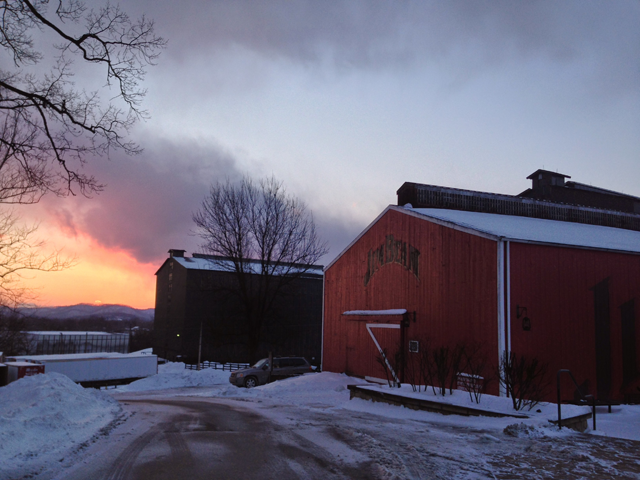
Jim Beam
While jaunting through Kentucky after being invited on the Bourbon Classic press trip, it was easy to see why. It’s hard to do on a “craft scale” what these companies achieve. They have massive rack houses filled to the brim with aging barrels. Buffalo Trace even has enough room for a special “Warehouse X”, a lab where they are testing the effect different conditions have on aging barrels. Brown Forman, which produces brands like Woodford Reserve and Old Forester, is able to control the quality of their barrels because they make them themselves at Brown Forman Cooperage.
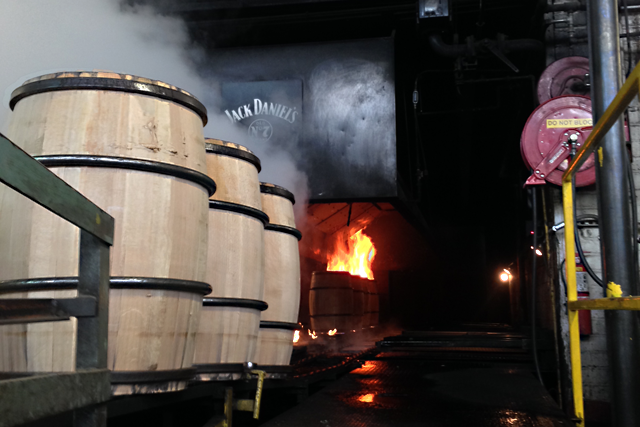
Barrel charring at Brown Forman Cooperage
The massive amount of time and capital that it can take to produce something like bourbon gives the big players huge advantages. Not that craft producers can’t produce some amazing products, but craft is not a synonym for quality in bourbon. And what do words like “craft” mean anyhow? It’s a debate that’s now the subject of a couple of lawsuits. Not being especially sentimental about liquids, I have no personal objection to “factory made” whiskey if it tastes good.
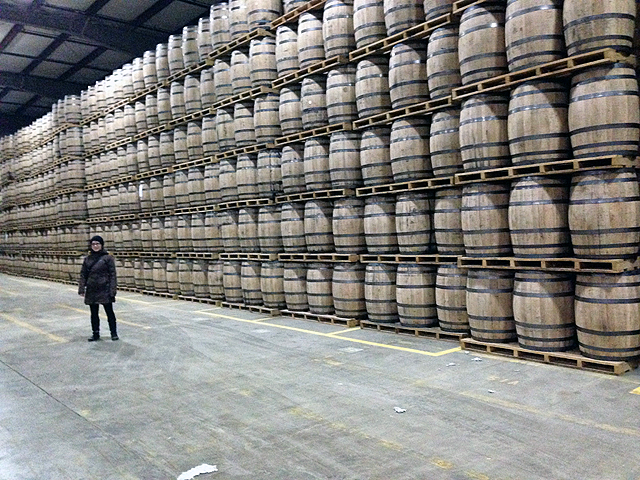
Me at Barton 1792 Distillery
I also was a bit afraid that the world of whiskey would be a bit like the worlds of wine or fine dining, where enthusiasts can be downright unfriendly at best and aggressively pedantic at worst. But everyone I’ve met through whiskey either here in Chicago or down at the Bourbon Classic was helpful, friendly and non-judgmental.

Buffalo Trace
It’s been a wild year of learning to drink it, but it’s a journey I’m glad I took. While watching the wind whip snow around the rack houses in Kentucky I thought how absurd the whole thing is. How humans have managed to come up with a drink that involves growing trees for decades, distilling alcohol from different types of grains and then aging the alcohol in those trees. But it’s a process that creates some incredible flavors, allowing you access to the complexity of flavor chemicals in trees, which normally humans can’t consume. Not only that, it pairs really well with some of my favorite foods. I’m a fan for life now.